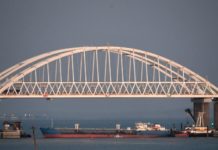Hurricane Irma churns through Caribbean, possibly en route to Florida
Considered Atlantic’s most powerful storm in a century, Irma churns across the northern islands, packing winds of 295 kph toward St Martin.
Hurricane Irma, the most powerful Atlantic storm in recorded history, churned across northern Caribbean islands on Wednesday with a potentially catastrophic mix of fierce winds, surf and rain, en route to a possible Florida landfall at the weekend.
Irma is expected to become the second powerful storm to thrash the US mainland in as many weeks but its precise trajectory remained uncertain. Hurricane Harvey killed more than 60 people and caused damaged estimated as high as $180 billion when it hit Texas late last month.
Hurricane Irma is so strong it's starting to show up on seismometers in the Caribbean — equipment designed to measure earthquakes. https://t.co/qJrSJ1v8gy
— Eric Holthaus (@EricHolthaus) September 5, 2017
The eye of Irma, a Category 5 storm packing winds of 295 kph (185 miles per hour) moved away from the island of Barbuda and toward the island of St Martin, east of Puerto Rico, early on Wednesday, the US National Hurricane Center (NHC) in Miami reported. It could hit Florida on Saturday.
It said winds would likely fluctuate slightly, but the storm would remain at Category 4 or 5 strength for the next day or two. The most dangerous winds, usually nearest to the eye, were forecast to pass near the northern Virgin Islands and near or just north of Puerto Rico on Wednesday.
TRT World’s Kerry Alexandra reports on how those in Irma’s path are scrambling to stay safe.
Barbuda
The eye of Hurricane Irma passed over Barbuda around 1:47 am, the US National Weather Service said.
Residents said over local radio that phone lines went down.
The storm ripped the roof off the island’s police station forcing officers to seek refuge in the nearby fire station and at the community centre that served as an official shelter.
The Category 5 storm also knocked out communication between islands. Midcie Francis of the National Office of Disaster Services confirmed there was damage to several homes, but said it was too early to assess the extent of damage.
Antigua
“We are hunkered down and it is very windy … the wind is a major threat,” said Garfield Burford, the director of news at ABS TV and Radio on the island of Antigua, south of Barbuda. “So far, some roofs have been blown off.”
Most people who were on Antigua and Barbuda were without power and about 1,000 people were spending the night in shelters in Antigua, according to Burford.
“It’s very scary […] most of the islands are dark so it’s a very, very frightening,” he said.
The eye of the hurricane went over Barbuda, which has a population of about 1,600 people, according to ABS radio.
“All hearts and all prayers and all minds go out to the Barbudans at this time because they experienced the full brunt,” a radio host said on the station early on Wednesday.
“I hear it’s a Cat 5 now and I’m terrified,” resident Carol Joseph said Tuesday as she finished her last trip to the supermarket before seeking shelter. “I had to come back for more batteries because I don’t know how long the current will be off.”
St Martin
Hurricane Irma slammed into the Caribbean islands Saint Martin on Wednesday, the French weather office said, adding that it had caused major flooding in low-lying areas.
The French government had previously sounded the alarm over thousands of people who had refused to seek shelter on French-run Saint Barthelemy, also known as St Barts, and Saint Martin, an island divided between France and the Netherlands.
Public relations professional Alex Woolfall said on Twitter he was hiding underneath a concrete stairwell as the storm neared Saint Martin.
Over and out. #StMaarten coming up to 1700 #HuracánIrma #Irma2017 #IrmaHurricane is on her way. Eerie. pic.twitter.com/4MczhnXOen
— alex woolfall (@woolfallalex) September 5, 2017











